Guru ka Taal Is A Sacred Sikh Pilgrimage Site In Agra To Visit In 2025
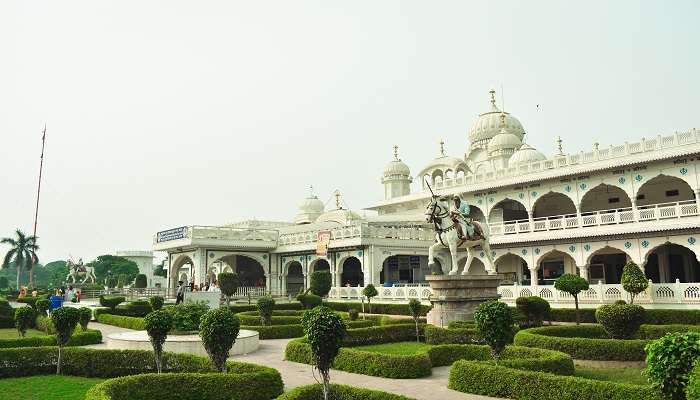
Situated in Agra, Uttar Pradesh, Guru ka Taal is one of the holiest pilgrimages of Sikhs, dating back in history. A reservoir built by the Mughals was converted into a memorial Bedsi Maths subsequent to the visit of the ninth Sikh Guru, Guru Tegh Bahadur Ji, during the 17th century. It is a place where Guru Tegh Bahadur Ji willingly surrendered himself to the Mughal authorities to save religious freedom, more so for the Kashmiri Hindus who were put to persecution. The self-sacrificing act of bravery is ingrained into the history of Sikhs. Guru ka Taal stands to symbolize monuments of resistance against oppression, a beacon joined with spiritual resilience.
Guru Ka Taal Location
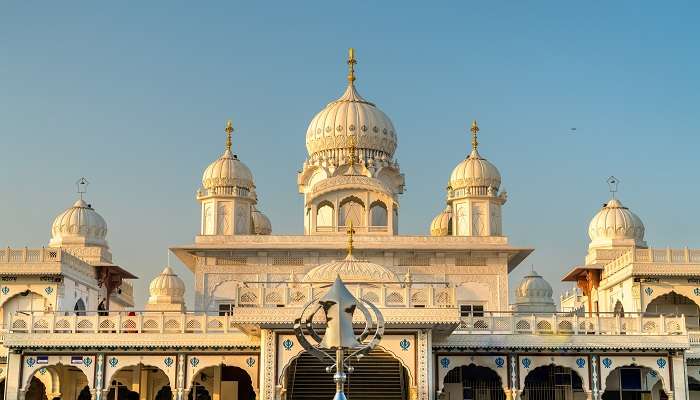
Located strategically in Agra, Uttar Pradesh, India, Guru Ka Taal is a very important place not only for pilgrims but also for tourists. The place lies in the midst of the busy Delhi-Agra Highway (NH-2) and is, hence, easily reachable and well-connected to the main city, along with some of the major points of interest. This is near Sikandra, one of the significant suburbs of Agra, and also home to the magnificent Akbar’s Tomb. The existence of Guru Ka Taal elevates its importance and attraction due to its proximity to other historical sites.
This place is just 15 km from the iconic Agra Fort and roughly 8 km from the world-famous Taj Mahal. It could, therefore, be ideally and beautifully included in any Agra itinerary. The site is easily accessible to visitors from Delhi or any other city in the vicinity by means of a good national highway. For public transportation-dependent travellers, the Gurudwara is fully accessible by bus services and auto-rickshaws, which can be accessed quickly. The surrounding area of the Gurudwara is well-developed, and ample parking space is available for private vehicles. This easy accessibility, besides the spiritual and historical importance of Guru ka Taal, has become an attraction of choice for those ready to explore the rich cultural tapestry of Agra.
Must Read: Diwan E Khas Fatehpur Sikri
Origins and The Mughal Period

The Guru ka Taal ultimately can be traced back to the times of the Mughals. It was a water tank built at the beginning of the 17th century. Constructed during the reign of Emperor Jahangir, it was part of an extended scheme to conserve water to irrigate the dry areas around Agra. The original construction consisted of several red sandstone arches designed around a large tank collecting rainwater as if demonstrating the Mughal engineering and architectural skills right at a place. This term “Taal” meaning the reservoir or pond explains basically its main purpose for conserving water in the olden days.
Tip: When visiting Guru ka Taal, if one has time, appreciate the Mughlia architecture and engineering with a view of the intricate red sandstone arches to the design of the original water reservoir, showing the ingenuity of the time.
Conservation of a Holy Site
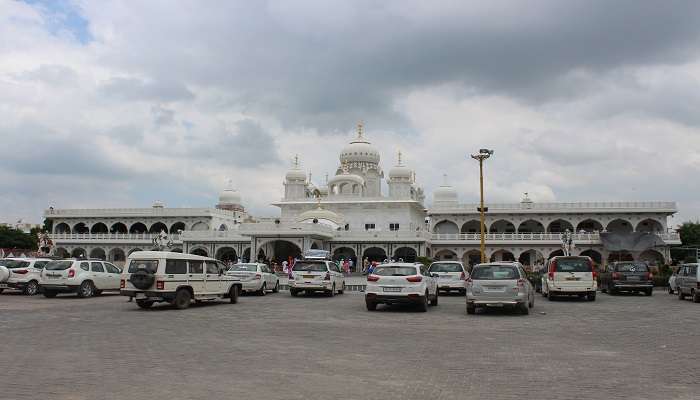
The historical importance of Guru Ka Taal is immense because it is related to the visit of Guru Tegh Bahadur Ji, the ninth Sikh Guru who visited here in 1675. At the time when atrocities were heaped on the Hindus for forcing them to adopt Islam as their religion, Guru Tegh Bahadur Ji came to this place on his way to Delhi. It is here that he chose to turn himself into the Mughal officials, led by Emperor Aurangzeb, as an act of great gallantry towards restoring the religious integrity of Kashmiri Hindus against forced conversions. This was an act of supreme gallantry and sacrifice indelibly embossed in Sikhism History. The Tank, which existed and served the need, acted as a pilgrimage spot among Sikhs in the later period. The Gurudwara, which has been constructed at the place of Guru ka Taal, has developed itself as the epitome of the martyrdom and spiritual legacy of Guru Tegh Bahadur Ji and draws devotees and visitors to pay tributes to his memory and ruminate on values of courage and religious tolerance.
Tip: Knowing the story behind Guru Tegh Bahadur Ji’s sacrifice will help you understand the spiritual relevance of Guru ka Taal. Further, attending the Sikh hymns in the Gurudwara will shed more light on the values that this monument remembers—bravery and religious tolerance.
Suggested Read: Buland Darwaaza
Guru Ka Taal Architecture
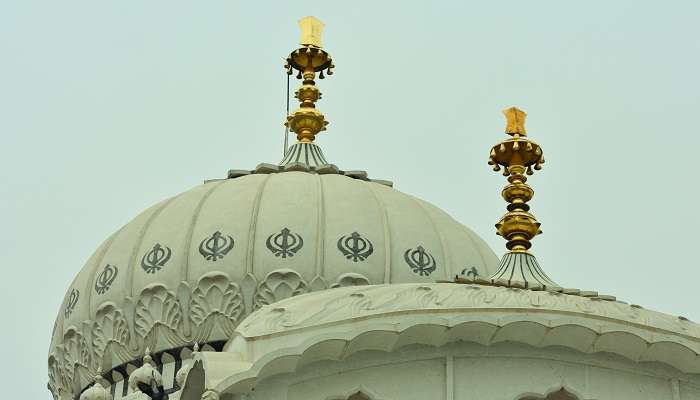
Guru Ka Taal is a great example of Mughal architecture; its characteristics stand out compared to the others because of the intense red sandstone formations and craftsmanship. The intricate arches and ornamented designs mark the original reservoir of the early 1600s. The tank is located in the middle of a beautiful layout compound with très diggé and niches around. Symmetry and geometric patterns line the design—reflecting the aesthetic principles central to Mughal construction. The arches further bear intricate floral and geometrical designs, which are indications of the stone carving skills of the artisans. The use of red sandstone is also not just for the aesthetic merits but also in the engineering of the building to stand the test of time.
Tip: Observe at length the minute details of the red sandstone arches and carvings of Guru ka Taal. Here, Mughal artistic excellence is combined with engineering skills to give an idea of the prevalent culture and the awesome architectural genes of the times.
Suggested Read: Pathauli Village
Additions of Sikh Architecture
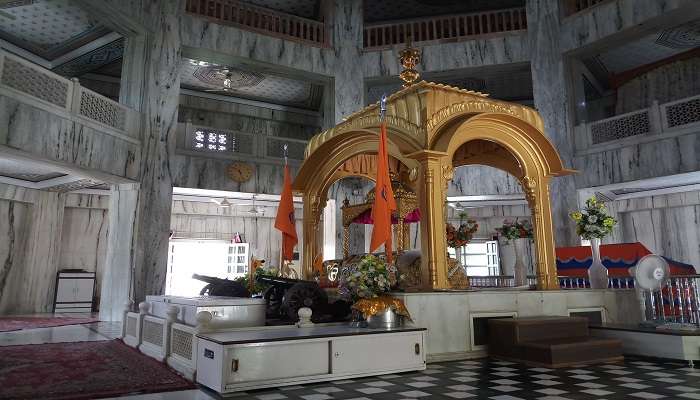
Transformation into a Sikh holy place of worship is introduced within it, granting architectural aspects that represent Sikh identity in terms of religion and culture. Distinct Sikh architecture in the structure of the Gurudwara in the complex combines itself with the current structures done in the Mughal style of architecture. With its serene, simple design, the white marble facade of Gurudwara makes a beautiful contrast to red sandstone, epitomizing purity and spiritual tranquillity. All the walls have sacred inscriptions and depictions adorning them, creating an ambience of devotion and tribute native to the prayer hall. The Gurudwara has added an attraction not only for spiritual importance but also for architectural diversity, as it is now one of the sites representing Mughal and Sikh architectural traditions.
Take a walk inside the Gurudwara at Guru ka Taal. The plain white marble and spiritual motifs evoke the holy atmosphere, part of the Sikh principles of humility and devotion.
Further Read: Kaulakha Village
In the city of Agra’s Guru ka Taal, one witnesses the timeless blend of Mughal grandeur and Sikh spirituality. Come and visit to enjoy some wonderful Mughal architecture pertaining to the original well and soak in serenity at this Gurudwara place. Learn about a place speaking volumes through tales of courage and sacrifices shown by the quite brave Guru Tegh Bahadur Ji some centuries ago. Be it cultural enrichment or spiritual solace one seeks, Guru ka Taal gives a different journey into India’s rich heritage. Plan a trip to Agra today and experience the amazing blend of architectural marvels with religious devotion in the heart of Agra.
For our editorial codes of conduct and copyright disclaimer, please click here.
Cover Image Source: Shutterstock
Frequently Asked Questions About Guru ka Taal
What is the importance of Guru ka Taal in the light of history?
Guru ka Taal is a place of high historic importance and is considered a pilgrimage of Sikhs because Guru Tegh Bahadur Ji, the ninth Sikh Guru, visited this place in the year 1675. It was at this place that Guru Tegh Bahadur Ji himself made the supreme sacrifice for the cause to preserve religious freedom, taken as a turning point in the history of Sikhs.
How to Reach Guru ka Taal in Agra?
Guru ka Tal is located on the Delhi-Agra Highway, a little ahead of Sikandra in Agra, Uttar Pradesh. It is situated at a distance of nearly 15 km from Agra Fort and around 8 km from the Taj Mahal. Bus, taxi, and even auto-rickshaws can take you to this place.
Is the Gurudwara at Guru ka Taal open to visitors?
Yes, visitors are free to enter the Gurudwara residing at Guru ka Taal. It is a worship and meditation area where Sikh hymns (kirtan) are sung. People have come to pay their respects to Guru Tegh Bahadur Ji.
What are some of the architectural features of Guru ka Taal?
Originally, Guru ka Taal was enclosed by red sandstone arches and intricate carvings belonging to the Mughal era. The Gurudwara is a fine specimen of traditional Sikh architecture, with a white marble facade, and the interior is adorned with religious inscriptions.
How much is the entrance fee for visiting Guru ka Taal?
No, there are no entrance fees to visit Guru ka Taal. This place is open to all visitors, irrespective of their religious associations. It provides a serene environment to all for spiritual reflection and cultural appreciation.
People Also Read:
Places To Visit In Uttra Pradesh Places To Visit In Agra Things To Do In Agra

Passionate Marketing Student with a flair for storytelling, eagerly embarking on a journey within the vibrant world of travel. Excited to merge analytical acumen with creative skills to elevate the editorial landscape of the travel industry.











